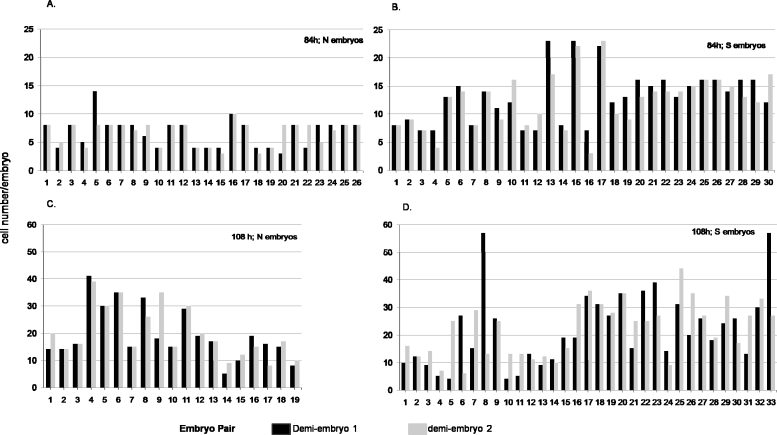FIG. 4.
Numbers of cells in demiembryo pairs at 84 and 108 h pc. Embryos were derived by bisection at the two-cell stage and twin partners cultured separately for either 84 h (A and B) or 108 h (C and D). Bisected embryos were derived either from normally bred dams (N; A and C) or superovulated dams (S; B and D). At 84 h when the embryos were mainly morulae and at 108 h when most were blastocysts, groups of embryos were fixed, immunostained for CDX2 and POU5F1, and counterstained with DAPI. The total number of cells in each embryo was then counted by using confocal microscopy to provide optical sections through the entire structure [35]. The numbers on the x-axis for each bar graph refers to a pair of demiembryos that were arbitrarily designated demiembryo 1 and demiembryo 2. The plots illustrate the relative similarity in cell number within twin pairs of embryos at both morula and blastocyst.

